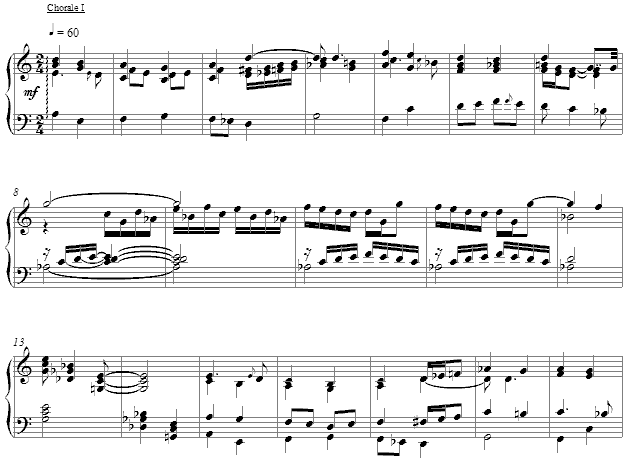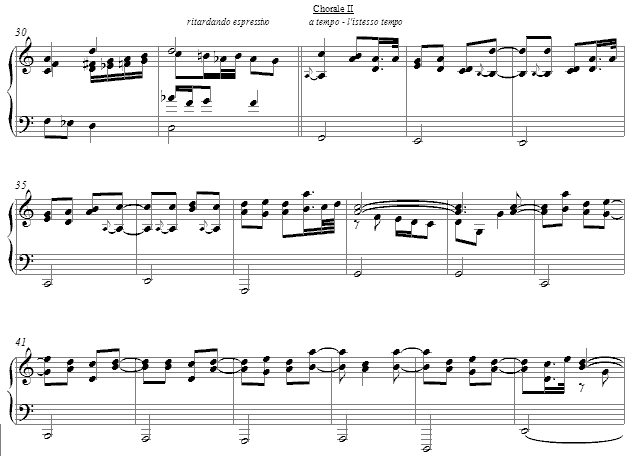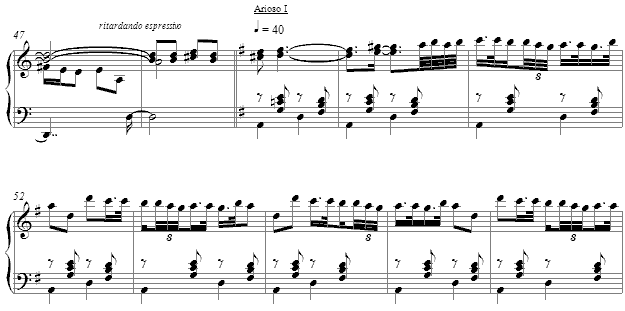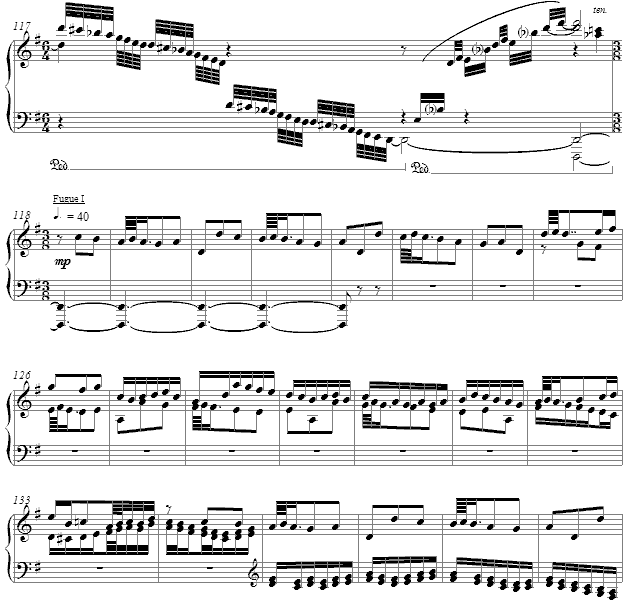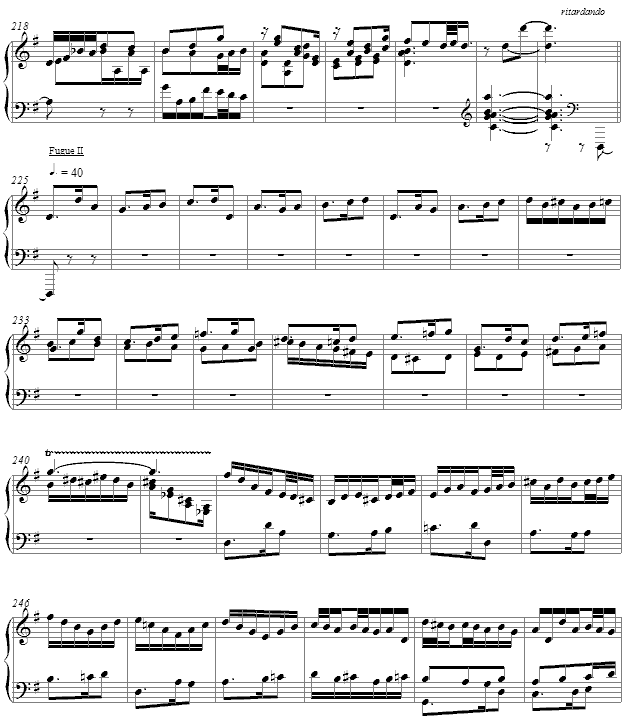Music and Texts of GARY BACHLUND
Vocal Music | Piano | Organ | Chamber Music | Orchestral | Articles and Commentary | Poems and Stories | Miscellany | FAQs
Chorales, Ariosos and Fugues on "Chagall" - (1995)
for piano
for Timothy Howard
This work was written in gratitude to Timothy Howard, organist, composer and teacher, after his debut of my organ work, The Jerusalem Windows. More about the theme and Timothy Howard may be found on that page.
Like that seven movement work in which one theme is a musical anagram of the name, Chagall, this work for solo piano uses the seven note theme in combinations, retrogrades and inversions linked together through contrapuntal practices as well as through twelve-tone practices employed in a wholly tonal texture. As the easy modulations which come form the theme itself were explored in many ways in the organ work, I chose to use the theme in yet other traditional ways. As the name says, there are four-part chorales, ariosos and fugues based wholly on the thematic material. The opening chorale states the theme in the uppermost voice twice, first beginning on C and then again on F, with a next restatements coming in the alto voice at measure 15 and beyond.
Following this quite normal harmonization within common practices, the next chorale states the theme in the soprano voice, with its modified inversion and retrograde as the second voice, all the while the theme is restated in the bass line in a complimentary in a half note prolongation, echoed in diminution at measure 38. Thus the theme accompanies itself in two different mensural ways.
The first arioso treats the theme with notated ornamentation over a simple, measure long ground bass rooted in the same tones.
The second arioso develops the tones of the theme clustered together in retrograde inversion into another ground bass, with lightly polytonal colors instancing several combinatorial uses of the theme which follow.
Next, a gracious melodic contour based on the theme is made over a long lined bass statement of the theme, with the addition of another statement divided between the soprano and alto voices restating the theme in an interlocking region.
This is followed by a virtuosic cadence, and the first of the fugue subjects, a repetition of the thematic tones juxtaposed rhythmically against the underlying meter. The answer is in the normal tonic-dominant relationship, although the theme itself implies other transpositions as well. The melodic ornamentation is fully notated throughout.
A second fugue subject in a dotted rhythm is the theme in retrograde and again juxtaposed asynchronously over an underlying triple meter, as was the first subject. The cross relations between tonal regions create false neighbors moving quickly between the competing regions.
A final virtuosic cadential gesture brings the work to a close, the coda being multiple statements of the theme and the simple downward scale together in a simple mensural canon to echo the contrapuntal character of the work as a whole. The tempo of this section may be dictated by the virtuosic needs of the individual player, and indeed rubati and future interpretation of the work is recommended and encouraged.
[ Total duration - 12 pages, circa 11' 20" ]
The score is available as a free PDF download, though any major commercial performance or recording of the work is prohibited without prior arrangement with the composer. Click on the graphic below for this solo piano score.
Chorales, Ariosos and Fugues on "Chagall"
